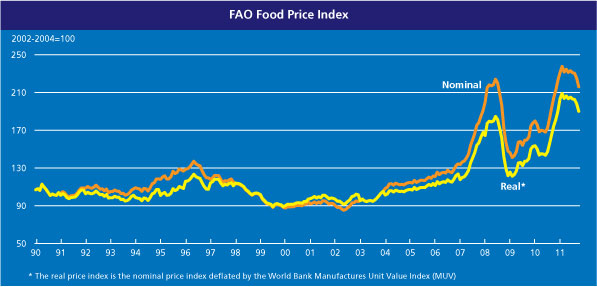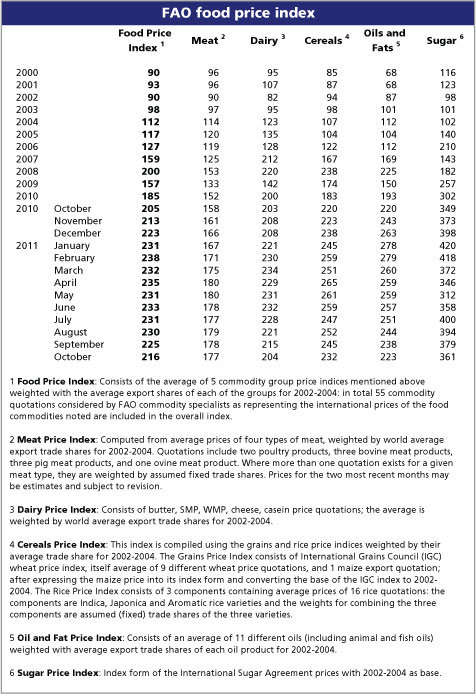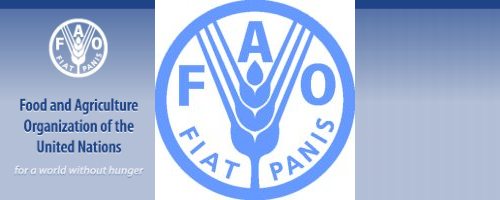FAO Food Price Index (FFPI).
FAO Food Price Index (FFPI)
The FAO Food Price Index is a measure of the monthly change in international prices of a basket of food commodities. It consists of the average of five commodity group price indices (representing 55 quotations), weighted with the average export shares of each of the groups for 2002-2004. In February, FAO revised the composition of the Meat Price Index. This resulted in adjustments to the historical values of the FFPI.
Monthly release dates for 2011: 03 February, 03 March, 07 April, 05 May, 07 June, 07 July, Summer Recess, 08 September, 06 October, 03 November, 08 December.
Release date: 03/11/2011
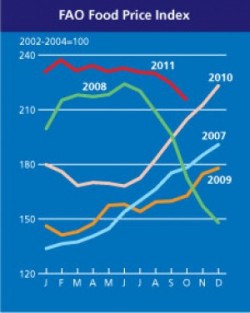 » The FAO Food Price Index (FFPI) averaged 216 points in October 2011, down 4 percent, or as much as 9 points, from September and 22 points, or 9 percent, below its peak of 238 points reached in February 2011. The Index has been falling steadily since June and, in October, dropped to an 11-month low, but still some 5 percent above the corresponding period last year. The decline reflects sharp decreases in international prices of all the commodities included in the Index.
» The FAO Food Price Index (FFPI) averaged 216 points in October 2011, down 4 percent, or as much as 9 points, from September and 22 points, or 9 percent, below its peak of 238 points reached in February 2011. The Index has been falling steadily since June and, in October, dropped to an 11-month low, but still some 5 percent above the corresponding period last year. The decline reflects sharp decreases in international prices of all the commodities included in the Index.
» The FAO Cereal Price Index averaged 232 points in October, down 5 percent, or 13 points, from September, 15 percent below its peak in April 2008, though 5 percent, or 12 points, higher than in October 2010. The historical values of the FAO Cereal Price Index have been slightly revised following the reintroduction of the India 25 percent broken rice quotations in the computation of the FAO Rice Price Index. The continuing decline in the monthly value of the FAO Cereal Price Index reflects this year’s prospect for a strong production recovery and slow economic growth in many developed countries weighing on overall demand, particularly from the feed and biofuels sectors.
 » The FAO Oils/Fats Price Index averaged 223 points in October, down 15 points, or 6 percent, from September, accelerating the gradual price decrease that started last March. The sizeable drop in the index reflected ample soybean crops in South America, strong palm oil output in Southeast Asia and the confirmation of record sunflower seed crops in the Black Sea region, which coincided with a slowdown in global import demand and downward pressure spilling over from other markets, in particular the international grain markets.
» The FAO Oils/Fats Price Index averaged 223 points in October, down 15 points, or 6 percent, from September, accelerating the gradual price decrease that started last March. The sizeable drop in the index reflected ample soybean crops in South America, strong palm oil output in Southeast Asia and the confirmation of record sunflower seed crops in the Black Sea region, which coincided with a slowdown in global import demand and downward pressure spilling over from other markets, in particular the international grain markets.
» The FAO Meat Price Index averaged 177 points in October, marginally down from September but still 12 percent, or 19 points, above the corresponding period a year ago and only 3 points down from its 20-year high recorded in April 2011. Over the first ten months, meat prices averaged much higher in 2011 than last year, , with year-on-year gains the strongest for ovine meat, up 36 percent, followed by beef and poultry, up 18 percent and 16 percent, respectively.
» The FAO Dairy Price Index averaged 204 points in October, down 5 percent from September and stood at around the same level as in October 2010. The decline of prices in recent months reflects improvements in world export availability and a fall in the value of the Euro in relation to the US Dollar, which promoted competition among exporters, as import demand remains firm.
» The FAO Sugar Price Index averaged 361 points in October, down 5 percent from September and 10 percent from the peak it reached in July 2011. Sugar prices have declined following better than earlier anticipated output in Brazil, the world leading sugar producer, but also in Europe, India, and Australia, combined with expectations of a slowing demand from the manufacturing and food preparation sectors.
…
New FAO Meat Price Index
The revised Bovine Meat Price Index generally yielded higher values and wider fluctuations than the original one. It also showed that beef prices in January 2011 had surpassed the record reached in September 2008.The FAO Meat Price Index has been revised to better reflect the structure of world trade in meat products. Changes were made to the price indices of the three main meat categories, namely bovine, poultry and pig meat, while the ovine meat index remained unaltered. The revisions mainly entailed the introduction or elimination of particular price series and/or a modification of their relative weights within the indices.
The new international Pig Meat Price Index is more volatile than the old one and resulted in a much more pronounced surge in mid-2008 and, subsequently, a sharper fall during the financial crisis. Under the new index, pig prices in January 2011 still fall short of the peaks reached during the 2007/08 soaring food price episode.
The revisions did not affect much the Poultry Meat Price Index, although they resulted in slightly higher values in the most recent years. The new index also shows that, despite a strong rise in late 2010, poultry prices in January 2011 are still below the late 2008 record.
Following the changes in the bovine, pork and poultry meat price indices, the Meat Price Index yields higher values than the original one, especially from 2005 onwards, and wider fluctuations. In January 2011, the index value was still below the peak reached in August 2008.
The shift to the revised Meat Price Index did not alter much the pattern of the overall FAO Food Price Index, although boosting its value, especially since mid-2005.
###
> UN Food and Agriculture Organization (FAO).
The Food and Agriculture Organization of the United Nations (FAO) is an intergovernmental organization and has 191 Member Nations, two associate members and one member organization, the European Union. Achieving food security for all is at the heart of FAO’s efforts – to make sure people have regular access to enough high-quality food to lead active, healthy lives.
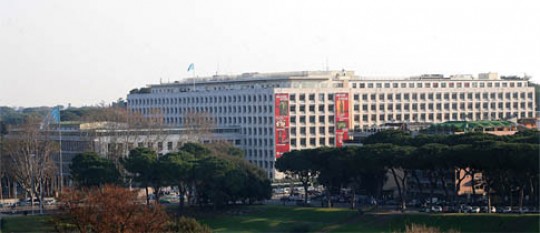
FAO’s mandate is to raise levels of nutrition, improve agricultural productivity, better the lives of rural populations and contribute to the growth of the world economy.
The Food and Agriculture Organization of the United Nations (FAO) is working with its Members and the entire international community for achievement of the Millennium Development Goals.
These eight goals – each with specific targets and indicators – are based on the United Nations Millennium Declaration, signed by world leaders in September 2000. They commit the international community to combating poverty, hunger, disease, illiteracy, environmental degradation, and discrimination against women.
![]()
The eight Millennium Development Goals are:
Goal 1: Eradicate extreme poverty and hunger
Goal 2: Achieve universal primary education
Goal 3: Promote gender equality and empower women
Goal 4: Reduce child mortality
Goal 5: Improve maternal health
Goal 6: Combat HIV/AIDS, malaria and other diseases
Goal 7: Ensure environmental sustainability
Goal 8: Develop a Global Partnership for Development
* More information at UN Food and Agriculture Organization (FAO)
###
> United Nations (UN).
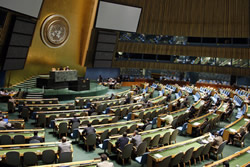 The United Nations was established on 24 October 1945 by 51 countries committed to preserving peace through international cooperation and collective security. Today, nearly every nation in the world belongs to the UN: membership totals 192 countries.
The United Nations was established on 24 October 1945 by 51 countries committed to preserving peace through international cooperation and collective security. Today, nearly every nation in the world belongs to the UN: membership totals 192 countries.
When States become Members of the United Nations, they agree to accept the obligations of the UN Charter, an international treaty that sets out basic principles of international relations. According to the Charter, the UN has four purposes:
- to maintain international peace and security;
- to develop friendly relations among nations;
- to cooperate in solving international problems and in promoting respect for human rights;
- and to be a centre for harmonizing the actions of nations.
###
* The above story is adapted from materials provided by United Nations (UN)
** More information at United Nations (UN)

